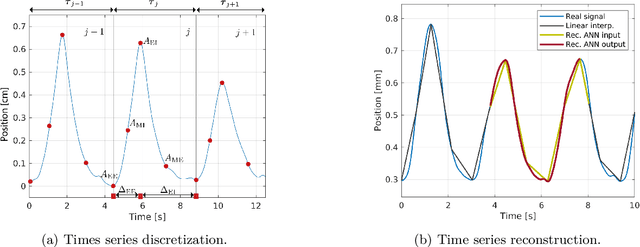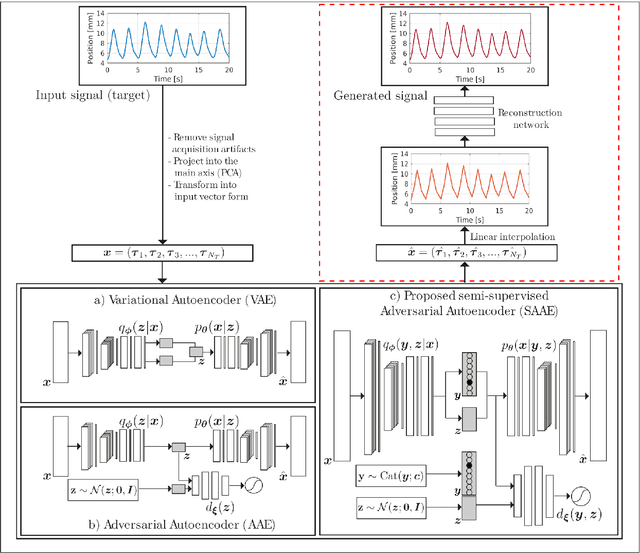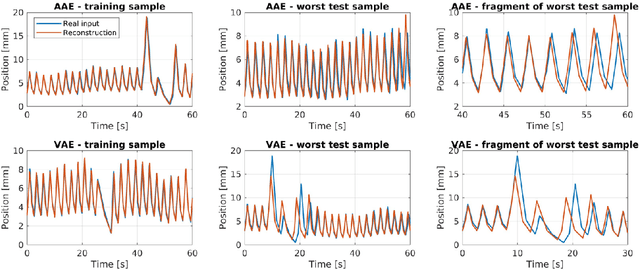Modeling biomedical breathing signals with convolutional deep probabilistic autoencoders
Paper and Code
Oct 19, 2020



One of the main problems with biomedical signals is the limited amount of patient-specific data and the significant amount of time needed to record a sufficient number of samples for diagnostic and treatment purposes. We explore the use of Variational Autoencoder (VAE) and Adversarial Autoencoder (AAE) algorithms based on one-dimensional convolutional neural networks in order to build generative models able to capture and represent the variability of a set of unlabeled quasi-periodic signals using as few as 10 parameters. Furthermore, we introduce a modified AAE architecture that allows simultaneous semi-supervised classification and generation of different types of signals. Our study is based on physical breathing signals, i.e. time series describing the position of chest markers, generally used to describe respiratory motion. The time series are discretized into a vector of periods, with each period containing 6 time and position values. These vectors can be transformed back into time series through an additional reconstruction neural network and allow to generate extended signals while simplifying the modeling task. The obtained models can be used to generate realistic breathing realizations from patient or population data and to classify new recordings. We show that by incorporating the labels from around 10-15\% of the dataset during training, the model can be guided to group data according to the patient it belongs to, or based on the presence of different types of breathing irregularities such as baseline shifts. Our specific motivation is to model breathing motion during radiotherapy lung cancer treatments, for which the developed model serves as an efficient tool to robustify plans against breathing uncertainties. However, the same methodology can in principle be applied to any other kind of quasi-periodic biomedical signal, representing a generically applicable tool.
 Add to Chrome
Add to Chrome Add to Firefox
Add to Firefox Add to Edge
Add to Edge